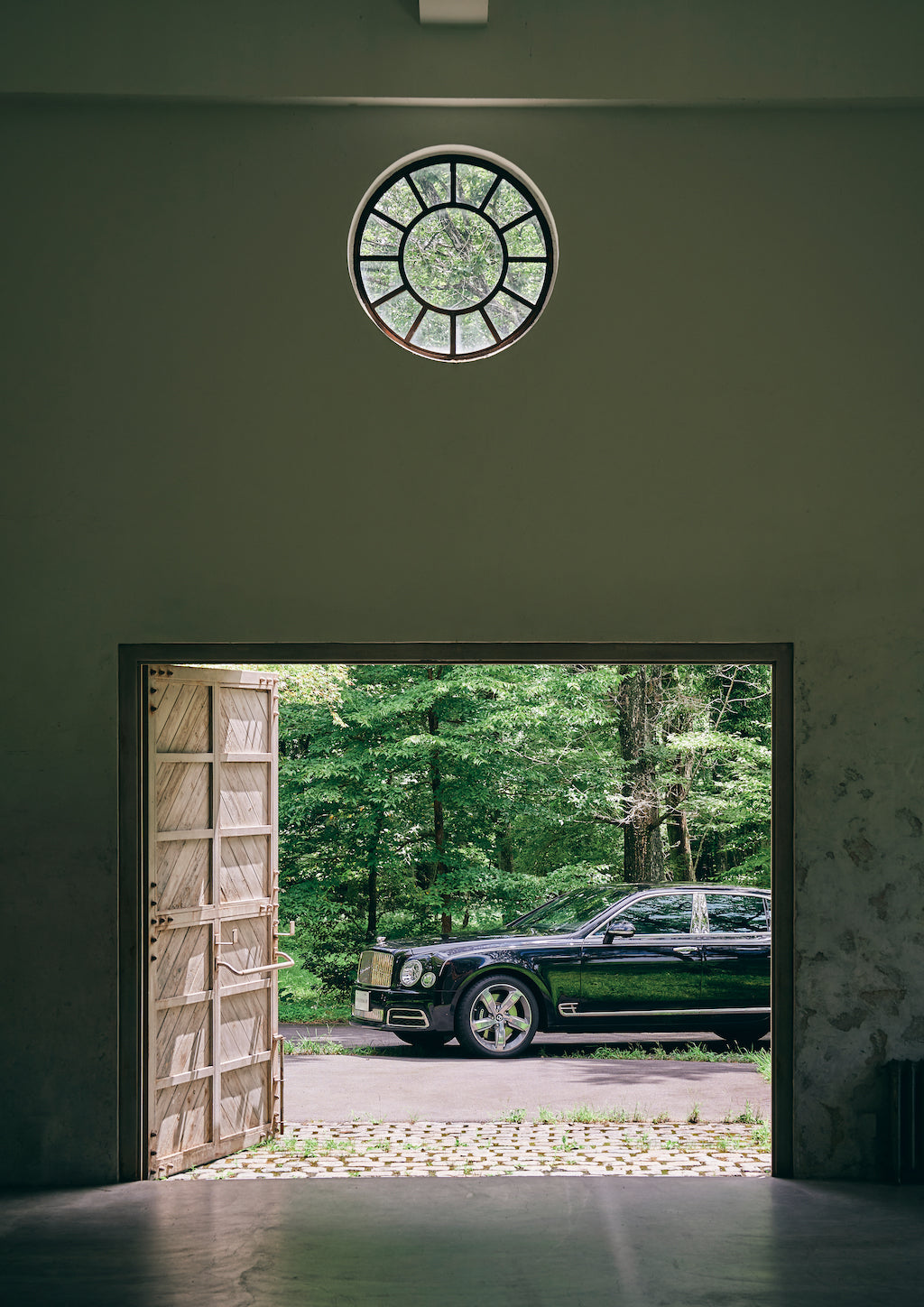
THE END OF AN ERA
Mulsanne Speed
THE END OF AN ERA
Mulsanne Speed
Flagship is a word used to describe a model that acts as the anchor in a brand’s changing lineup. The Bentley Mulsanne is packed with peerless craftsmanship - a traditional engine that has been around for a half of a century and an interior that takes up most of the 400 hours it takes to make the car. It was a model deserving of flagship status.
words: Yoshio Fujiwara
photography: Kentaro Yamada
translation: Sarka Fenclova


‘The end is just the beginning.’
This is what came to my mind as I was standing in front of the dignified and elegant saloon standing still, seeming to purify the air around it.
On 25 June 2020, the last Mulsanne was produced in Crewe with the whole world reluctantly bidding goodbye.
The moment put an end to the long life of the V8 OHV 2 valve unit, which had been the flagship model’s beating heart that went through numerous updates but stayed on duty from the S2 saloon released in 1959 until the end. This also meant the end of ‘pure’ Bentley designed, developed and manufactured in the UK...
However, this did not mean the spirit of Bentley continuing since the W.O. era died as well, quite the opposite.
At the 2009 Pebble Beach Concours d’Elegance, Mulsanne was promoted as a true drivers car, albeit a flagship saloon, a move symbolic of its world premiere side by side the 1929 8 Litre, with the two large round headlamps staying the same since the W.O. era and a coupé-like silhouette with a low interior reminiscent of the Brooklands.
The Mulsanne was also the first to adopt aluminium body panels, made using superforming technology - heated at 500 degrees and shaped with air pressure. The body combines smooth curved lines and sharp edges and the model is an important design icon, with the design of the headlamps and other parts continued until the current Bentley.
The mechanisms used latest technology including a twin-turbocharged traditional 6.75-litre V8 OHV, adjustable valve timing and a cylinder deactivation system. While complying with contemporary environmental regulations, it reaches 512ps as standard and the high-performance Mulsanne Speed 537ps. Its performance outshined supercars, speeding up from 0 to 100 km/h in 4.9 seconds with a maximum speed of 305 km/h. using a ZF 8-speed AT.
The chassis uses an air suspension with adjustable damping and the steering is optimised based on the conditions by a DCC (dynamic chassis control). The handling is natural and smooth as expected from a drivers car despite the robust 5,575 mm-long body.
When you drive the Mulsanne Speed again now, it feels like a delicate chronograph. The traditional, analog touch with each part being assembled and operating with flawless precision and the digital devices that tame the 2.8-ton body and 537ps of power create a perfect harmony.
Inside, the car is surprisingly quiet but the sound of the V8 engine responding to the accelerator and the information you feel during steering are rather garrulous, which adds to the excitement of driving.
And of course, there is the hand-made interior created piece by piece from the finest leather and wood. It makes you look forward to getting old as the colours develop a patina.
Finally, the part that impressed me the most was the concept, a stunning combination of tradition and cutting edge. Although the silhouette and shapes have changed, you can still feel it today in the Flying Spur.
The Mulsanne did not end with one era. It is a car that symbolises the beginning, a bridge between Bentley’s past and future the brand strides toward.





The Mulsanne Speed added in 2014 reaches 537ps, a 25ps increase from standard. The infotainment system that saw minor changes in 2016 was redesigned. For reference, it takes 400 hours to manufacture one Mulsanne out of which 150 hours are spent making the interior.

*This is a revised version of an article that appeared in Flying B No. 001 (2022). The information provided here was accurate at the time of publication.

